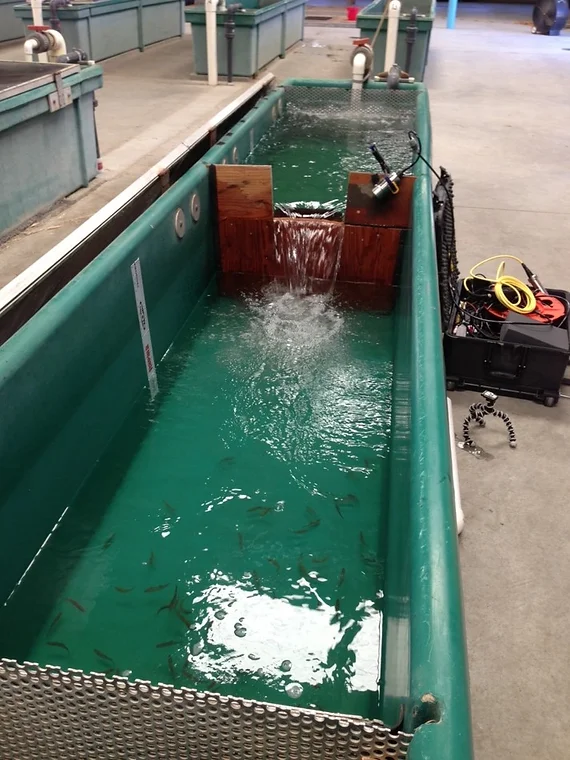Juvenile Fish Passage Criteria Assessment Project
Project Location: Warm Springs Fish Hatchery at Geyserville, CA
Project Description: During the summer and fall of 2016, project leaders will document the leaping abilities of groups of 100 juvenile steelhead (70 – 120 mm FL) at the Don Clausen Fish Hatchery at Lake Sonoma. Approximately 12 tests will be conducted including video analysis and recording. Results will be summarized in writing and presented to the Fish Passage Forum in Spring 2017.
Testing methods will be similar to those used in 2014, but two key variables will be changed that were unable to be tested in 2014 due to facility limitations. It is well-documented that both swimming and jumping performance in salmonids is strongly influenced by water temperature. Because the hatchery has a flow-through water supply and no temperature control, only a narrow range of temperature (13C to 18C) was tested in 2014. Those temperatures do not represent the range of water temperatures encountered in the natural environment, especially in northern states and at higher elevations. In 2016, a chilled water loop will be added to the test facility and jump performance will be tested in water ranging from 5C to 13C. It is expected that jump success over the 6-inch weir will exceed performance over the 12-inch weir under the colder water conditions.
Project Findings: The results of this study suggest that fish passage facilities with 6-inch jump likely provide a modest increase in percentage passage for small juveniles compared to 12-inch jumps, but not for fish >100mm FL. It is recommended that this modest increase in passage of smaller juveniles should be weighed along with other factors when designing a fish passage project, including cost, project footprint, and impacts on habitat. Additional testing is planned on both smaller and larger fish, and at different water temperatures, to further inform design guidelines.
Final Report: Juvenile Fish Passage Criteria Assessment Project Final Report
Results: In September 2019, the National Marine Fisheries Service (NMFS), Southwest Region reissued the Guidelines for Salmonid Passage at Stream Crossings (originally issued September 2001). The findings of this project helped inform some of the updates in the Guidelines for Salmonid Passage at Stream Crossings, which included two adjustments to the design criteria, and recommendations for intended applications for projects in California. These changes have the potential to help streamline state and federal guidelines regarding jump heights at juvenile fish passage facilities in California, which could save taxpayers and practitioners millions of dollars in the future.

